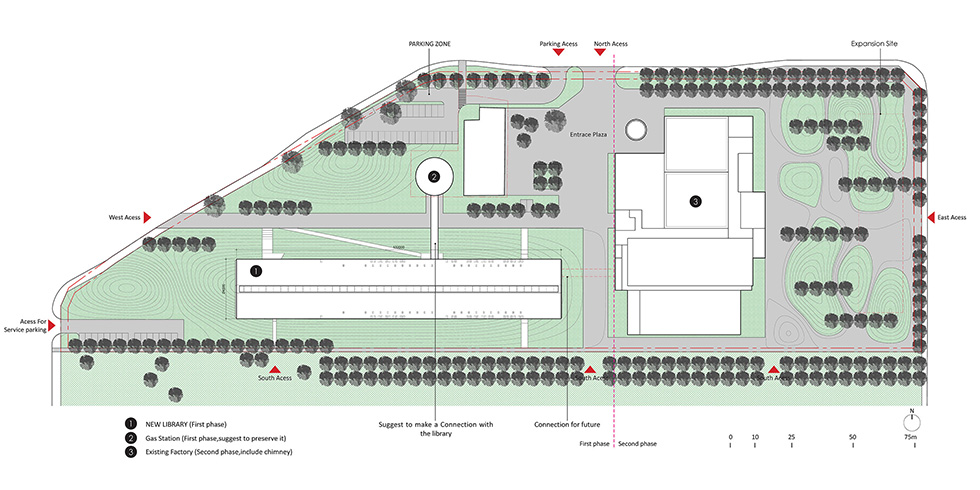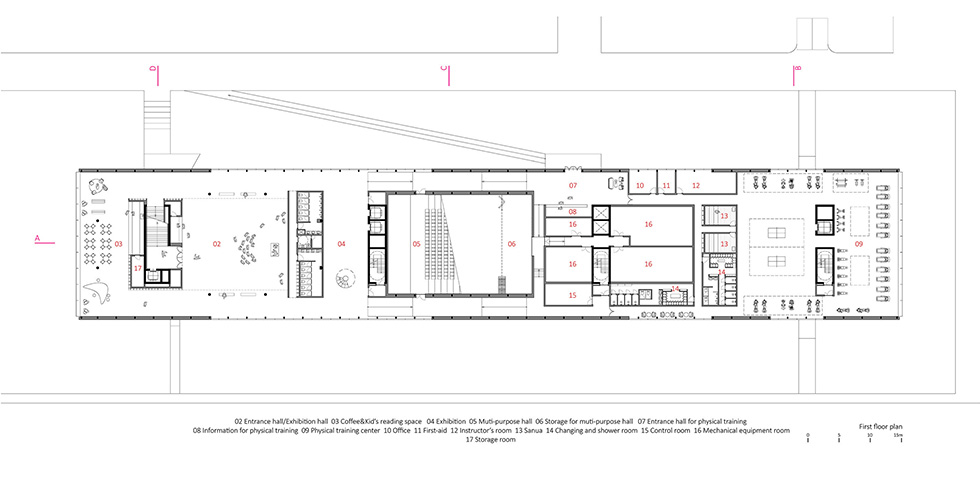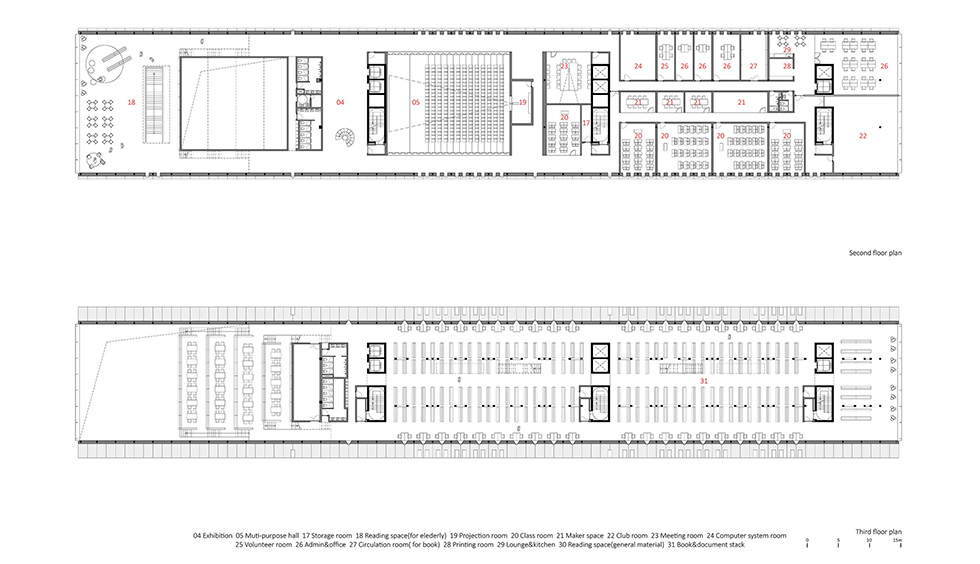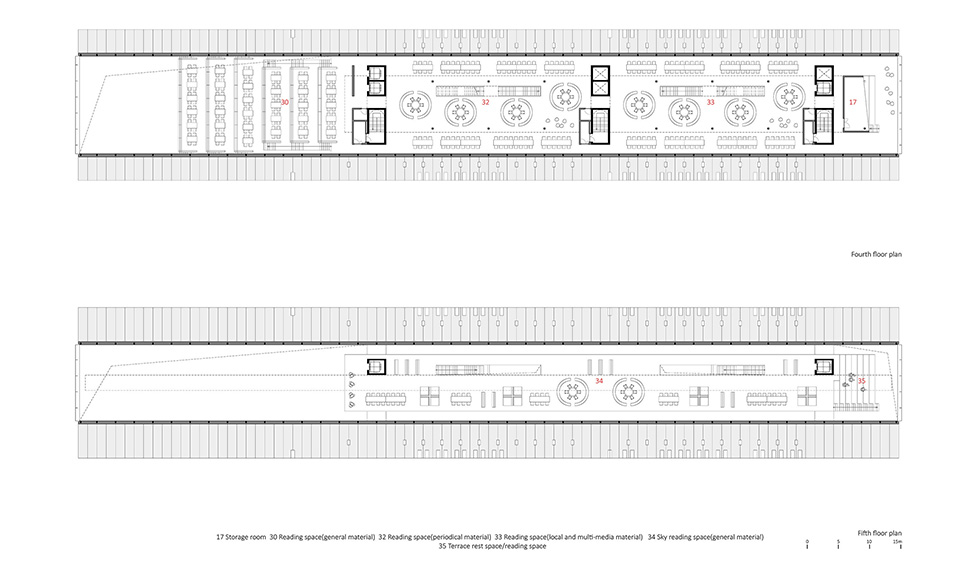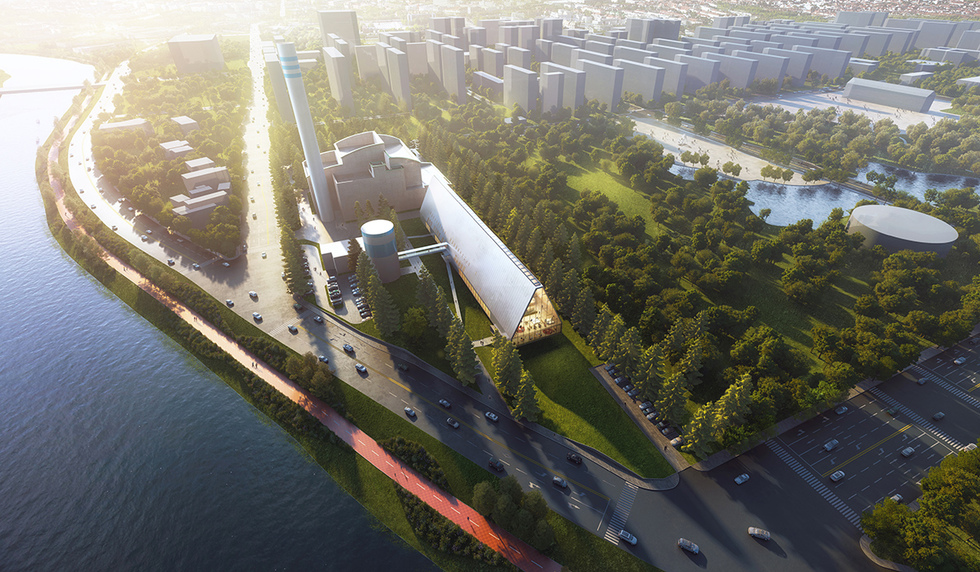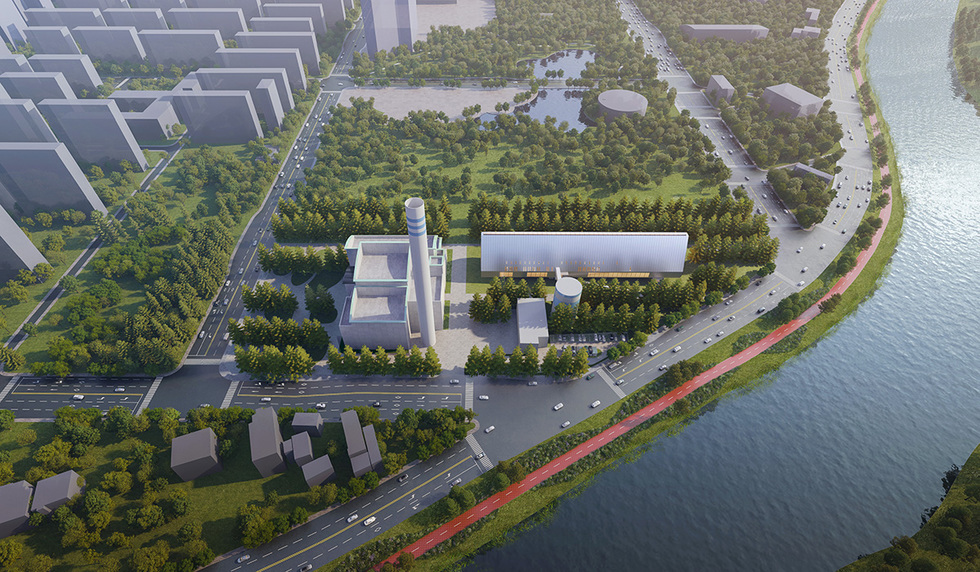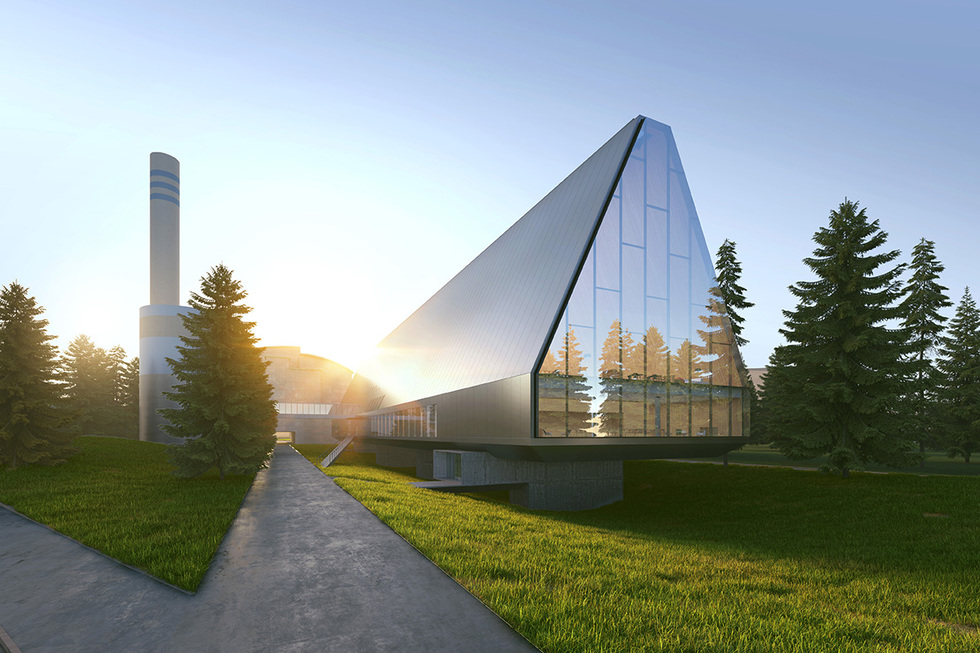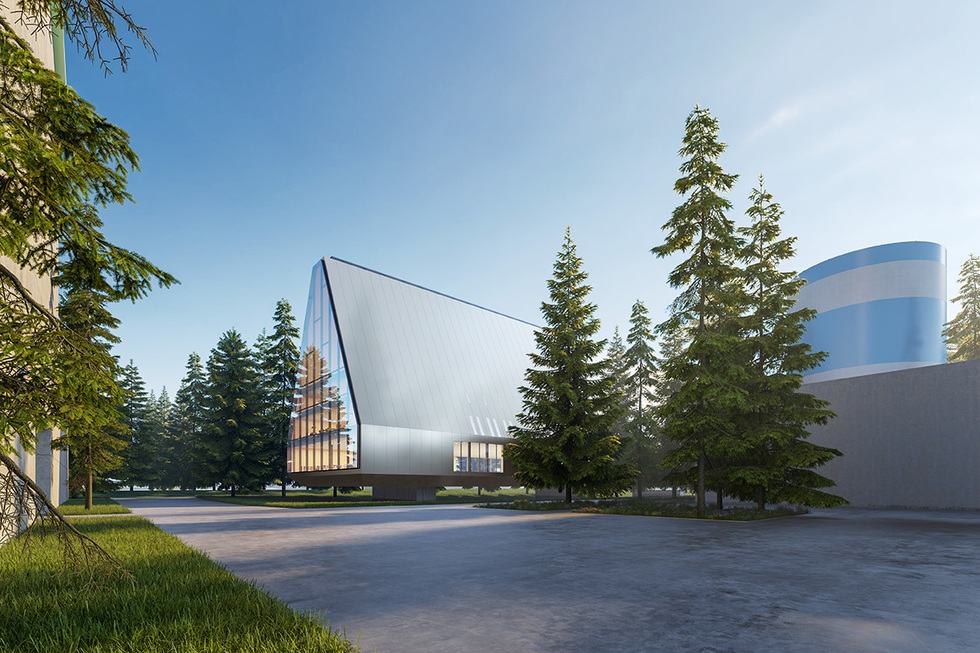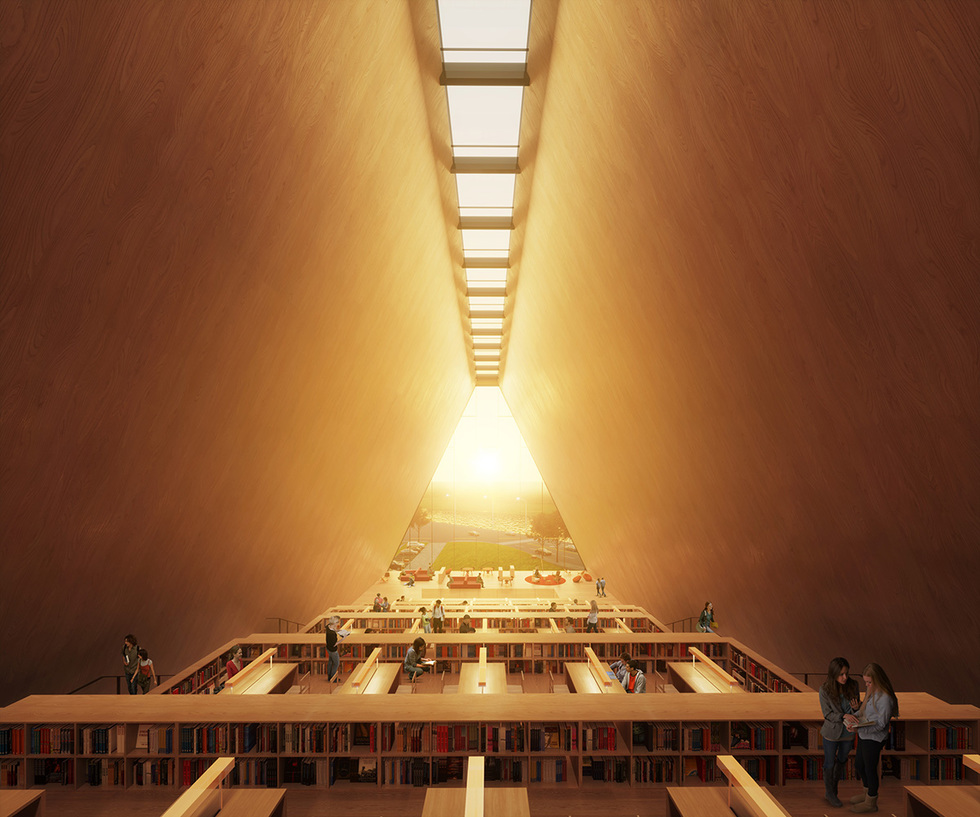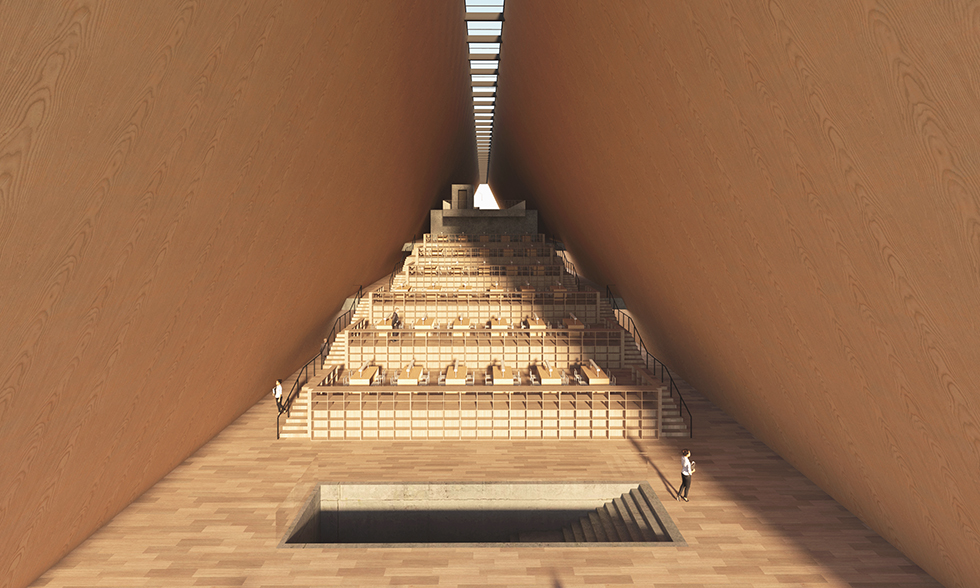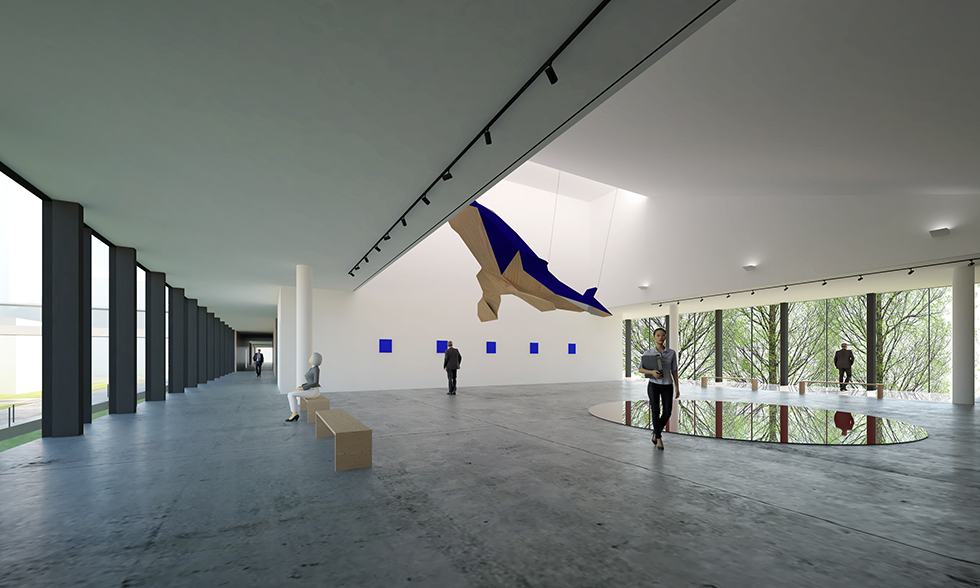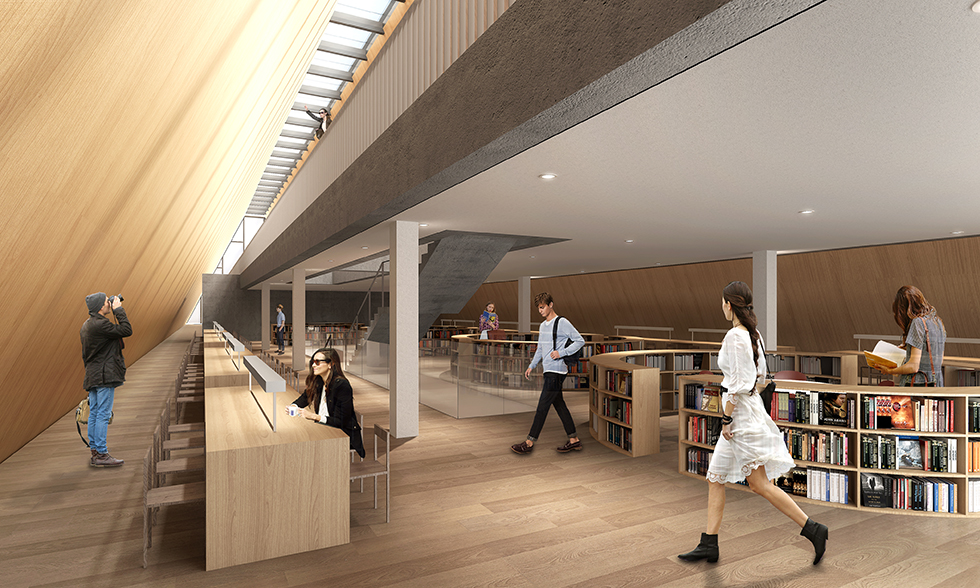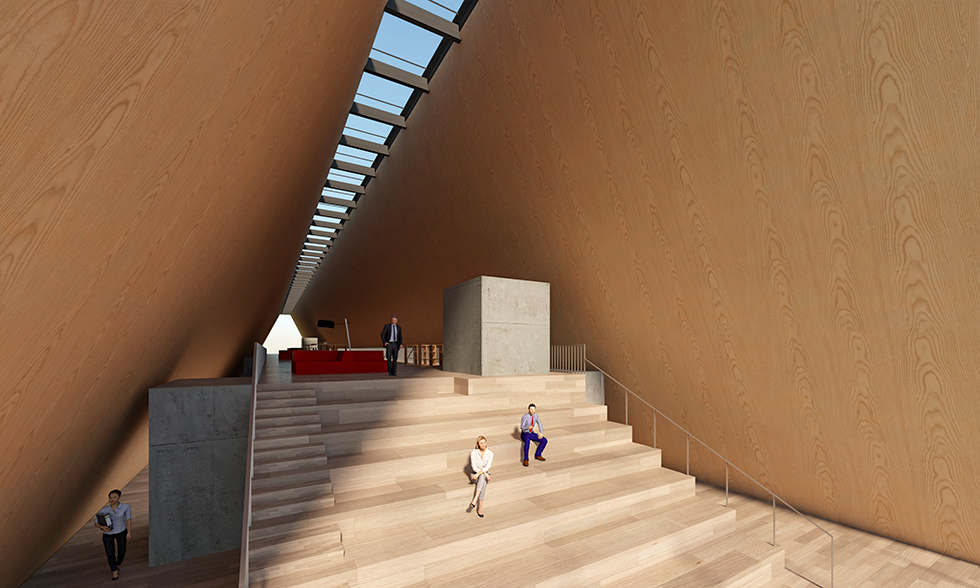| City Main Library Gwangju 韩国光州城市主图书馆国际竞赛 |
韩国光州城市主图书馆国际竞赛
International Competition Of Ctiy main library Gwangju,S.Korea
(Third Prize 第三名)
建筑面积(GFA):10,900sqm
2019-2020,光州,韩国
阶段:竞赛
都市--真正意义上的都市不仅只是经济、商业、政治等当代事物,还需通过了解背后的历史文化及市民的日常,并将这些在日常生活中的发展出来的内容也包含在内。以此理解,光州(Gwangju)在历史文化方面有着悠久且延续的脚步,项目工业性质的地块也从侧面反映了这个时代的在城市历史的层叠,保留有历史的痕迹同时又必须向前发展;作为现代文化的一种象征和表现手法,建筑责无旁贷地肩负了描绘现代乃至未来社会文化层叠的一面。
建筑—就建筑本身而言,自由开放、融入自然和都市活力是本案的理念;方案将整体建筑抬升,留出地面供市民运动休闲等日常活动,贯通南部energe park,与周边场地景观融为更大的开放一体,让未来的发展更合理灵活和更有期待;上方的建筑容纳了多种功能,展览、健身,阅览等,从这方面讲,建筑叠合了居民日常的多方面,发挥着都市的日常活力;我们的希望远不仅如此,自由开放、融合自然的理念也并非口头的,场地被置于更大范围的景观和公园中,无形中人们的通行将更自由、开放和日常,摒除 “圣神殿堂”的高大象征,建筑微微反光的磨砂氧化铝的表皮也将会使得建筑更好的融合周边;馆内的公共空间及阅览空间也被设计为更开放流通的空间,同时融合在周边景观和公园中,由此,内外兼修,便是我们描绘给光州的图书馆景象。
Metropolises are not only defined by economics, politics, commerce, residence and/or other modern and contemporary concepts, but should also include elements ranging from large-scale infrastructure to citizens’ individual preferences, which are developed in daily life by learning about a city’s history, culture and development. Thus, it makes cities truly viable and vibrant by combining and integrating these ‘metropolitan elements’.
Gwangju is known as the hometown of culture and art in South Korea and boasts rich historical and cultural heritage. Simultaneously, Gwangju also is the educational capital of South Korea, with universities and institutions at all levels and is the educational and cultural centre of Jeollanam-do. Gwangju has never stopped developing its history, culture and education. The plot of industrial character in this project also reflects the overlapped history of the city, which must retain past traces while moving forward. Therefore, on the one hand, the preservation of some representative industrial heritage is essential for the whole site plan and for the city; on the other hand, as a direction and a technique for expressing modern culture, modern architecture shoulders the task of integrating the ‘metropolises elements’ and depicting the overlapping of modern and future social culture.
As for the building itself, freedom, openness and integration into nature are all fundamental concepts of this project. Building massing follows the triangular shape of existing trees to achieve an architectural form that becomes smaller and smaller as it rises. This allows the structures to adapt and integrate into the surrounding environment. Simultaneously, the whole building is elevated, leaving space on the ground for daily activities such as sports and relaxation. By connecting with the Energe Park on the south and integrating with surrounding landscapes into a larger open space, the library is in a freer, more open and relaxed natural environment, bestowing on the public an intimate and natural experience while at once making the future development of the library more reasonable, flexible and desirable. The building houses multiple areas for diverse functions, such as exhibition halls, gyms and reading rooms. In this sense, the building covers various aspects of daily life of residents and imparts a sense of play to the vigour of the metropolis in daily life. Getting rid of the grand image of ‘temple of the holy spirit’, the slightly reflective skin of frosted aluminium panels will also allow the building to better blend into the surrounding landscape and park.
For the interior, circulation and free opening of the space is the focus of the design. The internal functions are divided into functional zones and streamlined according to the spatial form of the building’s shape, which tapers as it rises. The reading area is placed on the upper three floors, and the cultural education, physical training and administration office areas (each with separate entrances) are placed on the lower two floors on the east side of the building; it makes a reasonable zone-division while ensuring the ideal orientation and surroundings of each area. The stack room retains part of the intention stacks while dispersing the stacks into each reading area, which keeps it open to each reading space. Considering the future reuse of the gas station and the renovation of the factory in Phase II, the library preconceived the connection of subsequent functions and circulation. The interior is designed to be simple and applicable, making use of natural light to highlight the characteristics of the space.
The structure utilises reinforced concrete cores combined with large-span steel box girders. The cores are also used as equipment pipeline wells and evacuation staircases and are also natural ventilation ducts that can draw air up and out for added ventilation. In terms of environmental protection and energy conservation, the abundant local geothermal resources are used for floor heating in winter, and the undulating ground is used for rainwater recycling.
